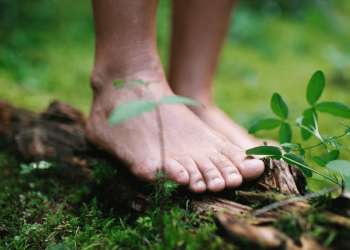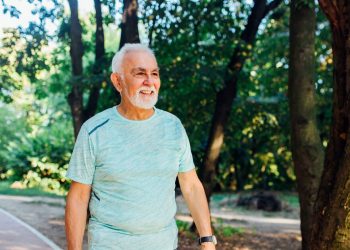In the intersection of ancient Eastern wisdom and modern wellness practices lies a profound yet accessible technique: chi energy walking. This practice combines the fundamental human activity of walking with the principles of energy cultivation found in Traditional Chinese Medicine and qigong. By bringing conscious awareness to the flow of life force energy known as chi or qi practitioners can transform a simple walk into a powerful tool for physical vitality, mental clarity, and spiritual development.
Understanding Chi: The Foundation of Energy Walking
Chi, pronounced “chee” and sometimes spelled “qi,” represents the vital life force that flows through all living things according to Traditional Chinese philosophy. This concept, developed over thousands of years, forms the cornerstone of practices including acupuncture, tai chi, and qigong. Chi is not merely a metaphysical concept but is understood as the fundamental energy that animates the body, sustains health, and connects us to the natural world.
In the human body, chi flows through invisible pathways called meridians, which connect various organs and systems. When chi flows smoothly and abundantly, we experience health, vitality, and emotional balance. Conversely, blockages or deficiencies in chi flow can manifest as physical discomfort, illness, or mental and emotional disturbances. The cultivation and balanced distribution of chi has been central to Chinese medicine and wellness practices for millennia.
Chi energy walking builds upon this foundational understanding by using the natural act of walking as a vehicle for chi cultivation. Unlike sedentary meditation or static qigong postures, walking meditation allows practitioners to generate and circulate energy while engaging in functional movement, making it an ideal practice for modern lifestyles.
The Philosophy Behind Chi Energy Walking
Walking, in its essence, is a rhythmic, repetitive movement that naturally lends itself to meditative practice. When we walk mindlessly, rushing from one destination to another, we squander an opportunity for cultivation and renewal. Chi energy walking transforms this everyday activity into a dynamic meditation that harmonizes body, breath, and mind.
The practice recognizes that movement itself generates energy. In Traditional Chinese Medicine theory, physical activity promotes the circulation of both chi and blood. Walking engages the entire body, from the feet that connect us to the earth’s energy to the arms that swing in rhythm with our steps. This full-body engagement creates an ideal conditions for energy cultivation.
Furthermore, chi energy walking emphasizes the importance of the mind’s role in directing energy. The Chinese saying “Yi dao, chi dao” translates to “Where the mind goes, chi follows.” By placing conscious attention on specific areas of the body or particular energy pathways while walking, practitioners can direct chi flow intentionally, addressing imbalances and strengthening weak areas.
Foundational Principles of Chi Energy Walking
Several key principles underpin the effective practice of chi energy walking. First is the concept of relaxed alertness—the body should be loose and natural, not rigid or tense, while the mind remains present and aware. Tension blocks chi flow, so releasing unnecessary muscular holding is essential.
The second principle involves proper posture and alignment. In chi energy walking, the spine remains elongated with the crown of the head gently lifted, as if suspended by a thread from above. The shoulders relax downward and back, the chest opens naturally without forcing, and the lower abdomen remains soft. This alignment allows chi to flow smoothly through the body’s central channel.
Breath awareness forms the third foundational principle. Natural, deep breathing coordinates with the walking rhythm, enhancing chi circulation. Rather than controlling the breath rigidly, practitioners allow breathing to deepen organically, often synchronizing breath with steps for example, inhaling for three steps and exhaling for three steps, or whatever rhythm feels natural.
The fourth principle emphasizes grounding and connection to the earth. With each step, practitioners consciously feel the contact between foot and ground, imagining roots extending from the soles of the feet deep into the earth. This grounding not only provides stability but also allows the practitioner to draw up earth energy to replenish their own chi reserves.
Basic Chi Energy Walking Technique
To begin practicing chi energy walking, start by standing still in a relaxed, natural posture. Take a few deep breaths, allowing your body to settle and your mind to become present. Perform a brief body scan, releasing tension from the face, neck, shoulders, and throughout the body.
Begin walking at a slower pace than your normal gait not unnaturally slow, but deliberately unhurried. As you walk, bring your attention to the soles of your feet, feeling the complete sequence of each step: the heel touching down, the weight rolling through the foot, and the toes pushing off. This mindful attention to the feet immediately begins to ground your energy and bring chi downward from the head.
Coordinate your breathing with your steps. A simple pattern involves breathing in for three or four steps and breathing out for the same count. As you inhale, imagine drawing fresh energy up from the earth through the soles of your feet. As you exhale, visualize any stagnant or negative energy releasing downward, returning to the earth to be neutralized.
Place your attention in the lower dantian, an energy center located approximately three finger-widths below the navel and inward toward the center of the body. In Chinese energy work, the lower dantian is considered the primary reservoir for storing chi. As you walk, imagine your awareness resting in this area, allowing energy to accumulate there with each breath.
Allow your arms to swing naturally at your sides, neither forcing movement nor restraining it. Some practitioners prefer to hold their hands loosely at the lower abdomen while walking, which can help focus energy in the dantian area. Experiment with both approaches to discover what feels most natural for your practice.
Advanced Techniques for Directing Chi
Once comfortable with basic chi energy walking, practitioners can explore more sophisticated methods for cultivating and directing energy. One powerful technique involves microcosmic orbit meditation while walking. The microcosmic orbit refers to an energy pathway that travels up the spine, over the crown of the head, down the front of the body, and back to the base of the spine.
To practice this while walking, visualize energy rising up your spine as you inhale, moving from the tailbone up through each vertebra. As the energy reaches the crown of your head, allow your attention to pause briefly at the top of the inhalation. Then, as you exhale, guide the energy down the front centerline of your body, passing through the forehead, throat, heart center, and back to the lower abdomen. Continue this circulation as you walk, allowing the movement of your legs and the rhythm of your breath to pump energy through this pathway.
Another advanced technique focuses on specific meridians. For example, to strengthen the kidney meridian—which governs vitality, willpower, and foundational energy—direct your attention to the Kidney 1 acupressure point (Yongquan or “Bubbling Spring”), located on the sole of the foot in the depression that forms when the toes are curled. As you walk, imagine energy entering and exiting this point with each step, connecting you deeply to earth energy while simultaneously awakening your kidneys’ vitality.
Practitioners may also incorporate color visualization, a technique used in various qigong traditions. Visualize breathing in golden or white light, representing pure, refined chi, and breathing out gray or murky energy, representing that which no longer serves you. This simple visualization can significantly enhance the cleansing and replenishing aspects of the practice.
Integrating Nature and Environment
Chi energy walking becomes particularly powerful when practiced in natural settings. Traditional Chinese thought recognizes that natural environments—forests, mountains, bodies of water possess abundant, high-quality chi. Walking in these settings allows practitioners to absorb environmental energy while simultaneously clearing stagnant energy from their own systems.
When walking in nature, take time to acknowledge and connect with your surroundings. Notice the quality of light, the temperature of air on your skin, the sounds of birds or rustling leaves. This sensory awareness naturally deepens the meditative state and enhances chi absorption. Some practitioners imagine breathing in the fresh, vital energy of plants and trees, recognizing the complementary relationship between plant life (which produces oxygen) and human life (which produces carbon dioxide).
Water environments offer particularly powerful opportunities for energy cultivation. Walking near oceans, rivers, or lakes allows practitioners to benefit from negative ions, which are abundant near moving water and are believed to enhance mood and energy levels. The rhythmic sound of waves or flowing water can also help deepen the meditative aspect of the practice.
Benefits of Regular Practice
Consistent chi energy walking practice yields numerous benefits across physical, mental, and emotional dimensions. Physically, practitioners often report increased energy levels, improved sleep quality, better digestion, and enhanced immune function all benefits associated with improved chi circulation in Traditional Chinese Medicine. The gentle, rhythmic nature of the practice makes it accessible to people of varying fitness levels while still providing meaningful exercise.
Mentally, chi energy walking cultivates focus and present-moment awareness. The practice trains the mind to remain anchored in sensory experience rather than lost in rumination or worry. Over time, this strengthened capacity for presence often extends beyond the walking practice into daily life, improving overall mental clarity and cognitive function.
Emotionally, the practice serves as a powerful stress-reduction tool. The combination of gentle movement, deep breathing, and meditative awareness activates the parasympathetic nervous system, countering the chronic stress response that plagues modern life. Many practitioners report feeling more centered, calm, and emotionally balanced after even a short session of chi energy walking.
Practical Guidelines for Beginning Practice
For those new to chi energy walking, start with just ten to fifteen minutes per session, three to four times per week. As the practice becomes more familiar and comfortable, gradually extend the duration. Quality of attention matters far more than quantity of time a fully present ten-minute walk generates more benefit than a distracted hour-long walk.
Choose times and locations that support your practice. Early morning walks, when the air is fresh and the world is quiet, are traditionally considered optimal for energy cultivation. However, any time that allows you to practice consistently is the right time. Similarly, while natural settings are ideal, chi energy walking can be practiced anywhere, even in urban environments or indoors.
Be patient with the learning process. Chi cultivation is subtle, and benefits accumulate gradually over time. Some practitioners report feeling energy sensations warmth, tingling, or flowing sensations within a few sessions, while others develop sensitivity more slowly. Both paths are valid; trust your individual process.
Conclusion
Chi energy walking represents a bridge between ancient wisdom and contemporary wellness needs. By bringing conscious awareness to the act of walking, we transform routine exercise into a holistic practice that nurtures body, mind, and spirit. Whether you seek stress relief, increased vitality, deeper self-awareness, or simply a more meaningful way to move through the world, chi energy walking offers an accessible path.
The beauty of this practice lies in its simplicity and adaptability. It requires no special equipment, can be modified for any fitness level, and integrates seamlessly into daily life. As you continue to practice, walking itself becomes a form of meditation, a moving prayer, and a reliable method for returning to balance and wholeness. Step by mindful step, breath by conscious breath, you cultivate the vital energy that sustains and enlivens your entire being.






